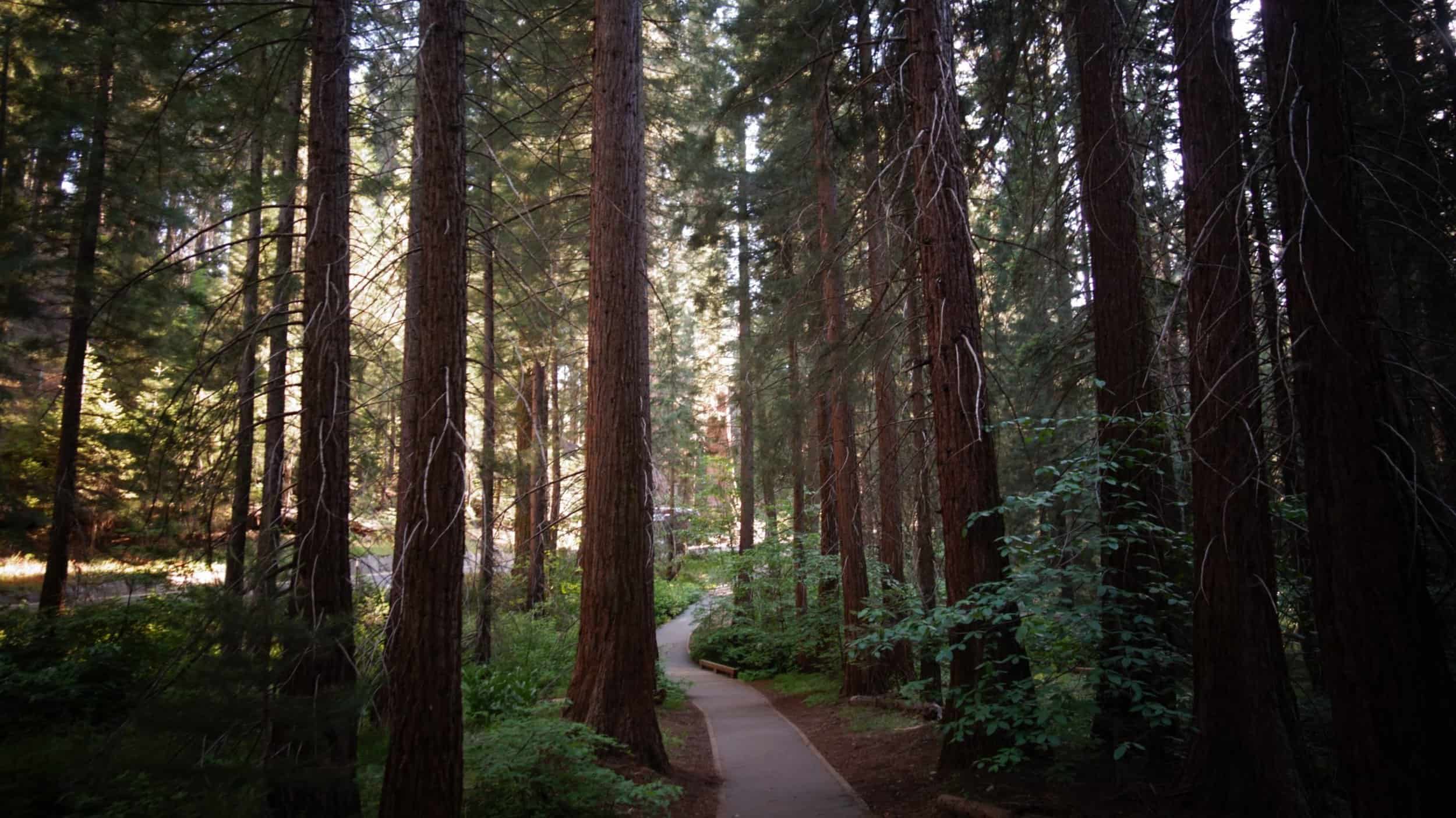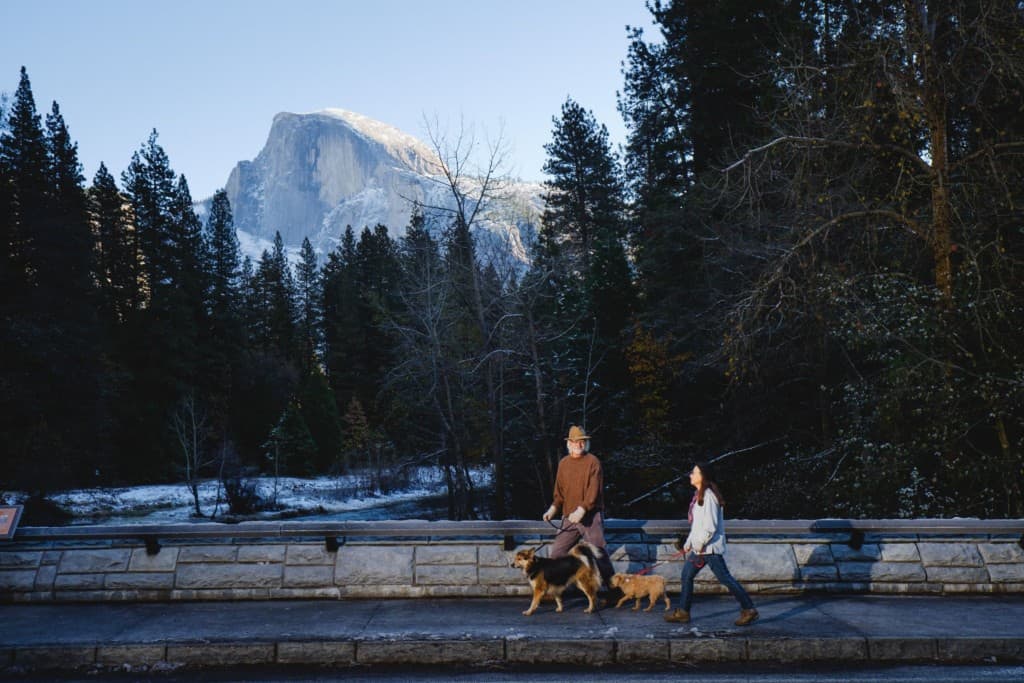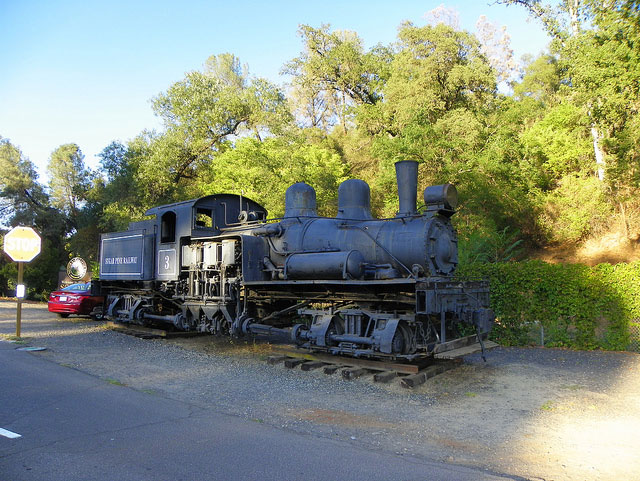The rugged country leading up to Yosemite’s Big Oak Flat (North) entrance boasts a pioneer history as rough-hewn as the landscape itself. Tuolumne County towns along the Highway 120/49 corridors—Oakdale, Columbia, Jamestown, Twain Hart, Groveland—still have a boomtown feel, and with it, a relaxed attitude toward dogs.
Columbia, “the Gold Rush town that refused to die,” is engagingly preserved as a state historic park, its 1850s ambience captured in an array of historic buildings. Most shopkeepers wear period apparel, and on busy summer weekends, dog-walking tourists and locals are everywhere to be seen. (So far a we know, there’s nowhere else in Gold Country where you can treat your pooch to a ride in a stagecoach.)
Eight miles way, the 1859 National Hotel in Jamestown welcomes dogs in guest rooms and on the vine-covered restaurant patio, while the town’s main attraction, Railtown 1897 State Historic Park, invites tail-waggers to join their people aboard open-air cars pulled by vintage locomotives. In nearby Sonora, the dog-friendly options include the Best Western Plus Sonora Oaks and Heritage Inn Yosemite-Sonora.
Travelers coming from Sacramento and the Bay Area have another choice—and another selection of sightseeing attractions—along Highway 132 from Modesto. This route follows the Tuolumne River Gorge to the Gold Rush hamlet of Coulterville, where the Yosemite Gold Country Lodge welcomes guests with dogs in tow. The entire town, from Magnolia Saloon’s bat-wing doors to the antiques shops and colorful cafés, harkens back to the days of TV Westerns.
From Coulterville, head north through Greeley Hill to Smith Station Road and up to Highway 120. This is the recently designated John Muir Highway, which follows the achingly picturesque route the famous naturalist took as he walked from San Francisco to Yosemite in 1868.
Last updated on July 1, 2024.







